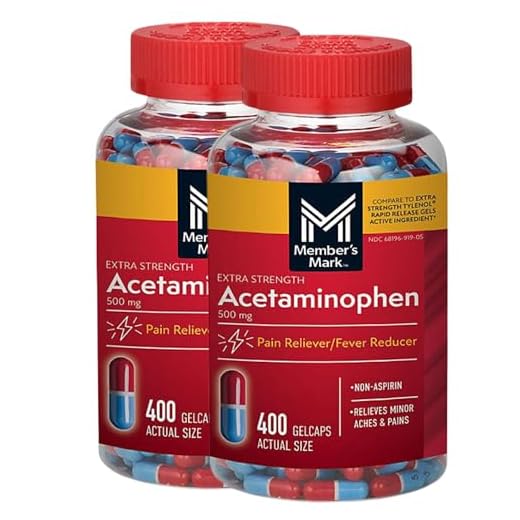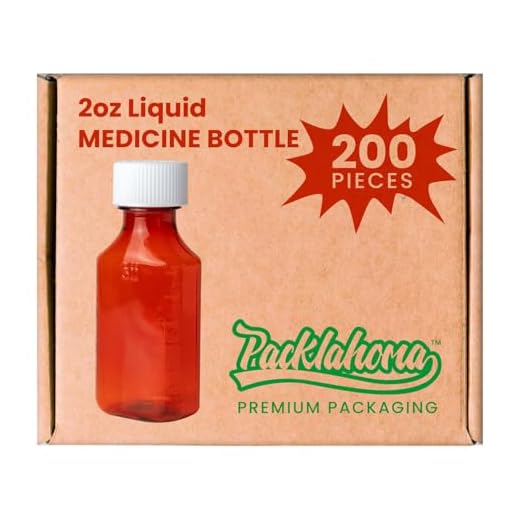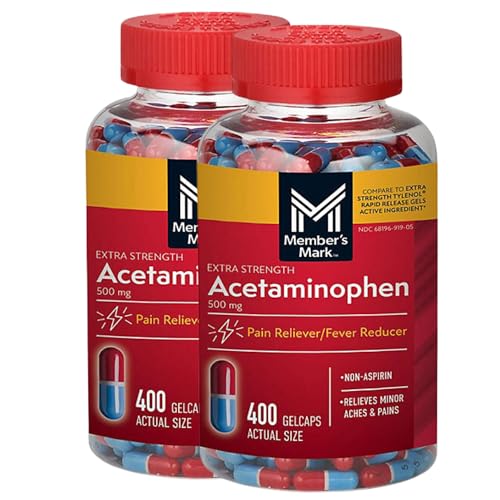





Keep solid acetaminophen tablets in cabin baggage for immediate access, theft prevention and protection from temperature extremes; reserve only sealed, clearly labeled liquid formulations for placement in the aircraft hold if necessary, and always keep liquids within the 100 mL / 3.4 oz limit for cabin screening unless declared to the security officer.
TSA and common airline rules: Over‑the‑counter acetaminophen tablets are allowed both in carry‑on and in the aircraft hold. Liquid medicines larger than 100 mL must be declared at the security checkpoint; prescription or medically necessary liquids are permitted but subject to inspection. Powders exceeding 350 mL (12 oz) in cabin baggage may require additional screening.
Labeling and documentation: retain original pharmacy or manufacturer containers and a copy of any prescription or physician’s note when traveling internationally. Store tablets in original blister packs or bottles; place all medicines in a clear resealable bag for faster inspection. For syrups or suspensions, carry a small labeled bottle in the cabin when quick access is required and keep the remainder in checked suitcases only if airline rules and destination laws permit.
Temperature and handling considerations: the aircraft hold can experience wide temperature and pressure variations during long flights – tablets generally remain stable, but gelcaps, effervescent forms and compounded liquids can degrade. Sensitive formulations should travel in cabin baggage to avoid heat, freezing or crushing.
Customs and international notes: acetaminophen (paracetamol) is widely permitted, but regulations vary by country; some jurisdictions restrict combination analgesics or high‑dose preparations. Check the airline’s policy and the destination country’s import rules before departure, and separate a small supply in cabin baggage for contingency.
Recommendation: Carry acetaminophen in cabin baggage when possible; if stored in the aircraft hold, leave tablets in original labeled container, include prescription or purchase receipt for large amounts, and seal in a clear zip bag.
U.S. screening rules: Solid oral acetaminophen is allowed through security and may travel in either cabin or aircraft hold. Liquid formulations (suspensions) must follow the 3.4 oz / 100 mL limit for cabin bags; larger liquid bottles are appropriate only for hold stowage. Keep manufacturer label showing active ingredient and strength (mg per tablet) visible.
Packing tips
Store tablets in their original bottle or a pharmacy-labeled container; transfer into a small clear resealable pouch for additional protection. Maintain a supply for the trip plus 7 extra days; quantities exceeding a typical personal-use amount (several months’ supply) can trigger customs inspection. Place a short printed note from the prescriber for any prescription-strength combination products or controlled components (for example, formulations containing opioids).
best choice products 9ft steel half patio umbrella w crank mechanism and bulky carry items should be packed separately from medication to avoid crushing; snacks such as which nuts have the highest protein belong in checked or carry bags depending on customs rules at destination.
International and airline considerations
Rules vary by country: several nations restrict codeine-containing acetaminophen combinations or require prescriptions. Before departure, check the destination’s official health or customs website and retain a copy of any prescription. Always keep a day’s worth of doses in cabin baggage to cover delays or misplaced aircraft hold items.
TSA and airline rules for carrying acetaminophen in stowed baggage
Keep solid acetaminophen tablets in a carry-on bag when possible; keep only a small sealed backup supply in stowed baggage and maintain original pharmacy labeling for identification.
TSA screening rules
TSA permits over‑the‑counter solid medications in cabin and stowed baggage. Liquid acetaminophen (syrup) carried in the cabin is subject to the 3.4 oz / 100 mL limit unless declared as medically necessary at the security checkpoint; medically necessary liquids exceeding that limit are allowed if presented for inspection. Liquids placed in the aircraft hold are not subject to the 3.4 oz rule, but aerosols and pressurized containers remain restricted under hazardous‑materials rules. Medication containers lacking labels or appearing suspicious may be opened or tested by security officers.
Airline and international considerations
Individual carriers may impose additional limits or handling requirements (temperature control, advance notification, or acceptance disclaimers for items stored in the aircraft hold). For international itineraries many customs authorities accept a personal‑use quantity–commonly up to a 30–90 day supply–but documentation such as an original prescription label or a physician’s note is often required for larger quantities. Declare medically necessary liquids at security and complete customs declarations honestly; failure to comply can cause seizure or fines.
Recommended checklist: keep the primary dose in the cabin; store a clearly labeled spare in stowed baggage only if needed; retain pharmacy labels and a copy of any prescription or doctor’s letter; present liquid medication over 3.4 oz at the security checkpoint for inspection; verify carrier policy and destination import rules before travel.
How to pack acetaminophen to prevent spills, contamination, and inspection delays
Store acetaminophen in the original manufacturer bottle; tighten cap, wrap cap threads with clear packing tape, then place the bottle inside a 1‑quart (≈1 L) resealable plastic bag containing a 4×4‑inch absorbent pad.
Step-by-step packing
- Original packaging: keep tablets in the factory bottle or sealed blister strips. If transfer is necessary, use an amber screw‑top pill bottle with a child‑resistant lid and affix a printed label showing medication name (acetaminophen), dosage in mg, total quantity, and prescribing clinician or pharmacy.
- Secondary containment: place the primary container inside a clear resealable bag; remove excess air, fold top, and apply a short strip of packing tape across the seal for extra security.
- Spill mitigation: add an absorbent pad or folded paper towel beneath the bottle and wrap the bottle in one layer of cling film to contain minor leaks.
- Tamper evidence: run a 2–3 cm strip of transparent packing tape across the cap/body seam; any cap rotation will be obvious to an inspector.
- Shock protection: enclose the sealed bag in a small hard‑shell medicine case or a rigid sunglasses case to prevent crushing; cushion the case with soft clothing if placed inside a suitcase.
- Isolation from liquids: store the medicine case away from toiletry compartments and external pockets that hold bottles; cross‑zip compartments and zip ties reduce movement inside a packed case.
Inspection-friendly labeling & documentation
- Include a printed copy of the pharmacy label or receipt and a one‑page inventory: generic name, dosage (mg), quantity, and owner’s name. Place documentation inside the same resealable bag and staple a duplicate to the hard case exterior under clear tape.
- Use a black permanent marker for any handwritten labels; write medication name as “acetaminophen” rather than brand names to avoid confusion during a brief visual check.
- If an agent requests verification, present the sealed bag and printed documentation together to shorten examination time.
For added stability of nearby items that might puncture or tip containers, secure accessories such as an umbrella or walking aid attachment (example: best umbrella holder for elderly walker) in the same compartment, wrapped and immobilized to reduce movement that could lead to leaks.
International travel: customs, declarations, and country limits on acetaminophen
Declare medication that exceeds a typical personal supply or contains controlled ingredients; carry original labeled containers plus a physician’s letter and prescription at all times.
Common practice among customs authorities sets personal-use allowances between 30 and 90 days’ supply. Exact quantities vary by destination; large or bulk amounts increase the likelihood of inspection and seizure. Airline security rules differ from customs limits, so follow both sets of requirements before travel.
Combination products with opioids (for example, acetaminophen plus codeine) are treated as controlled substances in many jurisdictions. Countries with strict controls or outright bans include Singapore, Thailand, the United Arab Emirates, Saudi Arabia and Indonesia; import permits or formal prescriptions are frequently required, and unauthorized importation can lead to criminal penalties.
At arrival, tick the customs declaration box for medicinal items when directed or if carrying more than a small personal quantity. Present original packaging, pharmacy labels and a concise medical letter stating diagnosis, dosage, total quantity, prescribing clinician name and contact, and treatment duration. A translation into the local language reduces delays.
Suggested declaration wording on a paper or digital form: “Paracetamol (acetaminophen) 500 mg – 30 tablets – personal medical use. Prescribing physician: Dr. [Name], [phone/email].” Replace tablet count and dose with actual values.
Before departure, consult the destination country’s embassy or official customs website, the IATA Travel Centre entry for that country, and the national health regulator for drug-import rules. Verify rules for both plain acetaminophen and any combination formulations; check whether a written prescription or prior import permit is mandatory.
Consequences for noncompliance include confiscation, fines, detention or refusal of entry. For medications containing controlled substances, obtain required permits or a documented prescription before travel to minimize legal risk and inspection delays.
What documentation or labeling to carry if airline or authorities question medication
Physician’s letter – exact content
Provide a dated letter on official clinic or hospital letterhead containing: traveler full name and passport number; generic medication name (acetaminophen) plus any brand names carried; prescribed strength (mg per unit) and typical daily dose; total quantity required for trip with dispensing date and expiration; route of administration (oral); clinical indication or diagnosis; prescriber full name, medical license/registration number, clinic address, direct phone and email; handwritten signature and physician stamp. File name example: med_letter__.pdf.
Labeling, packaging, and digital backups
Keep original manufacturer packaging showing lot number, expiration date and National Drug Code (NDC) or equivalent. If repackaged by a pharmacy, ensure a pharmacy label is attached that lists traveler name, medication name, strength, quantity dispensed, dispensing date and pharmacist contact. For liquid formulations include concentration (mg/mL) and total volume in milliliters. For pill organizers attach a printed adhesive label with medication name, strength, number per dose, date range and passport name.
Carry a copy of the pharmacy receipt or invoice showing purchase date and quantity. Prepare scanned PDFs and JPGs of: physician letter, pharmacy label, original box front/back, prescription or receipt. Store one set offline on the device and one cloud copy accessible without special apps; also print two paper copies and keep them with carry documents. Suggested filenames: prescription_rx.pdf, pharmacy_label.jpg, package_front.jpg.
If traveling to a non-English-speaking destination, obtain a certified translation of the physician letter and pharmacy label or a simple bilingual summary signed by the prescriber; notarization recommended for destinations that request formal verification. When customs or airline staff request verification, present physical documents first and provide digital copies on request; include prescriber contact for immediate confirmation.







